A few weeks ago, we told you the NBA draft early entry withdrawal deadline had solidified the preseason hierarchy of the 2018-19 college basketball season.
There was always a chance that a transfer or an unfortunate injury could alter the landscape, but we figured we knew enough about every team's roster to project a solid list of preseason rankings.
Then, Reid Travis, an all-Pac 12 forward who averaged 19.5 PPG and 8.7 RPG at Stanford last season, announced that he's transferring to Kentucky, where he'll be immediately eligible to compete for the Wildcats in 2018-19.
That changes things.
Although one move is not typically enough to make us update the Way-Too-Early Top 25, this is different, so we're rearranging the top of the rankings to account for a New No. 1.
1. Kentucky
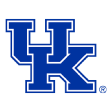
Previous rank: No. 3
The arrival of Reid Travis gives Kentucky one of the nation's top big men, a player who recorded 16 double-doubles last season, but has not played with the elite athletes he'll join in Lexington.
The former five-star recruit might be the strongest player in college basketball. He's a force around the rim who made 56 percent of his shots inside the arc. He'll play next to PJ Washington, who averaged 10.8 PPG and 5.7 RPG last season, to form America's top frontcourt. Five-star big man E.J. Montgomery is in the mix, too.
With the fleet of high-level guards John Calipari will have on his roster, this lineup could resemble the North Carolina team that won the national title in 2017 by essentially grabbing every offensive rebound in sight and bullying opponents in the paint.
The presence of Travis will make life much easier for Ashton Hagans, Immanuel Quickley and Keldon Johnson -- all five-star wings -- and returnee Quade Green.
The Wildcats boast a veteran, proven big man, an athletic frontcourt and talented wings on what will be the most intriguing Kentucky roster since Karl-Anthony Towns, Willie Cauley-Stein and Devin Booker all played together during the 2014-15 season.
2. Kansas
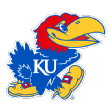
Previous rank: No. 1
Bill Self will boast one of the nation's most potent frontcourts in 2018-19 with Udoka Azubuike and Memphis transfer Dedric Lawson (19.2 PPG, 9.9 RPG, 2.1 BPG in 2016-17) in his starting rotation. Self has been successful at Kansas when he has multiple big, talented bodies around the rim, dating back to the Jayhawks' national championship team in 2008 which featured Darrell Arthur and Darnell Jackson alongside guards Brandon Rush and Mario Chalmers.
Lawson's presence will allow Azubuike to focus on doing the dirty work on both ends of the floor that pushed the Jayhawks into the Final Four last season. Self will also pair Cal transfer Charlie Moore (12.2 PPG, 1.1 SPG in 2016-17) with five-star recruits Devon Dotson and Quentin Grimes. K.J. Lawson, Dedric's brother, will also give the Jayhawks another proven talent.
3. Duke

Previous rank: No. 2
Duke knew the players they would lose soon after the NCAA tournament, which allowed time to assess the arrivals of R.J. Barrett, Zion Williamson and Cam Reddish -- ranked first, second and third, respectively, in the 2018 class -- months before they don the blue and white for Mike Krzyzewski.
We have questions. How will Duke use Williamson? How will Reddish and Barrett share the ball? Can freshman Tre Jones -- the younger, more athletic brother of Tyus Jones, who won Most Outstanding Player during Duke's run to the 2015 national title -- run the show?
Remember, however, these are all "Do I drive the Maserati or the Porsche to work today" questions. This is a disastrous assignment for any opposing coach. Duke will be a force. Again.
4. Gonzaga

Previous rank: No. 5
Mark Few knew what he had long before Wednesday's deadline after both Killian Tillie, who missed Gonzaga's Sweet 16 loss to Florida State with a hip injury, and Rui Hachimura, the versatile 6-foot-8 specimen, both announced their returns shortly after the season ended.
If Tillie stays healthy and makes 48 percent of his 3-pointers again, he'll find a spot in the NBA. And Hachimura is a jump shot away from a lucrative future as a pro. Zach Norvell Jr. (12.7 PPG) is a West Coast Conference Player of the Year candidate. Few will also have Brandon Clarke, who averaged 17.5 PPG for San Jose State in 2016-17.
This is one of the most athletic teams Few has had. Likely WCC champs? Yep. National title contender? Yep. You're not surprised. This is what the Zags do.
5. Tennessee

Previous rank: No. 6
Kudos to Admiral Schofield for exploring his pro prospects by entering the draft before making the right decision to return to Knoxville to chase a first Final Four appearance in school history. The Vols are stacked and ready to defend the SEC title they shared with Auburn in 2017-18.
Schofield will pair with SEC Player of the Year Grant Williams (15.2 PPG) to form one of the nation's top duos.
We know the Vols will defend well -- they ranked in the top 10 in adjusted defensive efficiency last year -- and Rick Barnes reminded doubters he's still one of the game's elite coaches with his effort last year. Things are trending up for Tennessee.
6. Nevada

Previous rank: No. 9
While Nevada awaited monumental decisions from Caleb Martin (18.9 PPG), Jordan Caroline (17.7 PPG) and Cody Martin (14.0 PPG) -- the top three scorers from a team that averaged 83.0 PPG last season -- Eric Musselman received a commitment from 6-10 Jordan Brown, ranked No. 31 in 2018.
Good news. Then, Caroline announced his return. Wonderful news. The return of the Martin twins? The best news. They're a pair of 6-foot-7 wings who chose to come back to pursue a national championship and become legends in Nevada basketball history.
Grad transfers Ehab Amin (Texas A&M Corpus Christi) and Trey Porter (Old Dominion) enhance this team's depth. Nevada might be the most exciting team in America next season.
7. Virginia
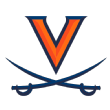
Previous rank: No. 7
Was that necessary? The UMBC Event Center now possesses a giant banner that commemorates UMBC's historic win over Virginia, the first 1-seed in NCAA tournament history to lose to a 16-seed. The Cavaliers may never rid themselves of the shame, but they're back again as a national title contender.
Here's a crazy prediction: Virginia will finish the year within the top 10 in defensive efficiency. And Kyle Guy, Ty Jerome, Jack Salt and a healthy De'Andre Hunter, the program's best NBA prospect since Malcolm Brogdon, will put together another impressive win tally, snatch a great seed in the tourney and, well, we'll see what happens after that.

Previous rank: No. 8
The return of Cameron Johnson (12.4 PPG, 4.7 RPG) gives the Tar Heels a seasoned star to replace the on-court leadership of Joel Berry II, who led the team to the national title in 2017. Johnson can help bolster his professional prospects (his 3-point shooting success rate dropped from 42 percent to 34 percent last season) as well as UNC's goal of pursuing another national title.
The Tar Heels will have the pieces to snatch a fourth ring for Roy Williams. Three of the team's top four scorers will return. Luke Maye, who was quietly the most important stay-or-go player not named Donte DiVincenzo, will start next season as a preseason All-American. Coby White is a five-star point guard. Nassir Little, a 6-7 wing ranked No. 10 in 2018, earned MVP honors in the McDonald's All American Game.
A top-10 recruiting class and the return of two All-ACC-caliber players should position the Tar Heels to compete for another title in both the ACC and NCAA tournament.

Previous rank: No. 10
Michigan State coaches wondered if Nick Ward would make the best decision and come back for one more season. He did. That helps Tom Izzo, who has navigated turnover as well as any team in the Big Ten.
Ward (12.4 PPG, 7.1 RPG, 1.3 BPG) can compete for Big Ten Player of the Year next season with Minnesota's Jordan Murphy and Wisconsin's Ethan Happ. He'll lead a unit that also features guard Cassius Winston (12.6 PPG, 49.7 percent from beyond the arc). Michigan State averaged 1.20 points per possession and made 42.7 percent of its 3-pointers with Winston on the court last season, according to hooplens.com.
You can't replace Jaren Jackson Jr. and Miles Bridges. They're unique talents. But Marcus Bingham is an ESPN 100, 6-foot-9 big man who will work with Ward, Xavier Tillman and Kenny Goins to form a strong frontcourt and back a Big Ten contender.
10. Villanova

Previous rank: No. 2
Donte DiVincenzo made the smart decision to stay in the draft after earning Most Outstanding Player honors in the Final Four and excelling at the combine. And you can't blame Omari Spellman for chasing his dreams in a league that salivates over athletic big men who can stretch the floor.
Their departures change our assessment of Villanova, a team that had a chance to win its third national title in four years had those two returned. Still, Jay Wright will put out a winning team. Double-figure scorers Eric Paschall and Phil Booth are back. Collin Gillespie (39.4 percent from the 3-point line) is the next "Where'd he come from?" candidate on a team with a habit of promoting previously anonymous young shooters.
Don't forget the introduction of five-star point guard Jahvon Quinerly. Albany grad transfer Joe Cremo (17.8 PPG) is in the mix now, too.
11. Auburn
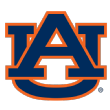
Previous rank: No. 11
Yes, Bruce Pearl lost a few key players off a squad that shared the SEC championship. But the drama is over for the Tigers, who move forward with a collection of talent that's still among the best in the country.
Austin Wiley, who missed last season due to his connection to the FBI bribery probe, tested the NBA waters but ultimately withdrew. Mustapha Heron (16.4 PPG), the team's leading scorer, entered the draft but withdrew and decided to transfer. That's a significant loss, but Bryce Brown and Jared Harper will both return.
Desean Murray, the team's leading rebounder, decided to leave and compete elsewhere as a grad transfer next season. But Danjel Purifoy, who also missed last season due to the FBI probe, is set to return and Anfernee McLemore should bounce back from a serious leg injury at some point next season. The Tigers will vie for the SEC title in 2018-19.
12. Kansas State

Previous rank: No. 12
The records never matter whenever Kansas and rival Kansas State compete in the Sunflower Showdown. But this year's edition of the series could impact the Big 12 title hunt.
Coming off an Elite Eight appearance, the Wildcats, who lost to just one team outside KenPom.com's top 50 last season, will try to block KU's attempt to extend its record-breaking streak of conference titles.
Bruce Weber has finished outside the top 50 in adjusted defensive efficiency just three times in a 17-year coaching career. He'll have another elite defensive squad along with Barry Brown, who wisely withdrew from the NBA draft.
13. West Virginia

Previous rank: No. 13
West Virginia has finished first or second in defensive turnover rate for the past four seasons, a streak that aligns with the presence of guard Jevon Carter. Bob Huggins has parted with critical players in the past, but Carter has been the identity of the program over the past four seasons.
Still, a West Virginia team constructed around Esa Ahmad, Lamont West and Sagaba Konate (3.2 BPG) can still tussle with the best of the Big 12. Both Konate and Ahmad withdrew from the NBA draft -- good for the Mountaineers, bad for the Big 12.
The Mountaineers won't replace an impactful player like Carter. With their style, however, and the returning talent, they're still a top-tier squad in the Big 12.
14. Virginia Tech

Previous rank: No. 14
Virginia Tech only lasted for a game in both the ACC and NCAA tournaments, which wasn't the ending Buzz Williams anticipated. In wins over Virginia, North Carolina and Duke last season, however, the Hokies showcased their potential. Now it's time to ask if they can take the next step after last year's 10-8 finish in the ACC.
They lost their final three games after a Feb. 26 win over Duke, but Justin Robinson (14.0 PPG, 40 percent from the 3-point line) is back, along with three of the top four scorers from last season.
15. Oregon

Previous rank: No. 15
Dana Altman lost Troy Brown Jr., a first-round draft prospect, but multiple key players, including top scorer Payton Pritchard (14.5 PPG), return.
Plus, Altman brings in the third-ranked recruiting class, a group that includes five-star prospects Bol Bol and Louis King. Bol was only four blocks short of a triple-double in the Nike Hoop Summit last month. The 7-foot-2 athlete and top center prospect in his class is a breathtaking talent.
Altman will have the brand of lengthy athletes that helped him reach the Final Four in 2017. Last year's team never found that rhythm. Bol could, however, turn this program into a Pac-12 power and NCAA tournament squad again.
16. Syracuse

Previous rank: No. 16
To enter next season as a top-25 team and ACC sleeper, Jim Boeheim needed Tyus Battle (19.2 PPG), who climbed the mock draft boards via his fabulous effort throughout the NCAA tournament, to come back for another season. On Wednesday, Battle announced his return. And now Cuse fans can begin to think about next season.
What if Battle, Oshae Brissett (14.9 PPG, 8.8 RPG) and Frank Howard help the Orange start the 2018-19 season the way they ended 2017-18 (with wins over Arizona State, TCU and Michigan State in the NCAA tournament)? A strong opening chapter would make Cuse fans forget Darius Bazley picked the G League over a year with Boeheim.
17. Michigan
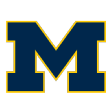
Previous rank: No. 17
Charles Matthews (13.0 PPG, 5.5 RPG), who announced his return Wednesday, is a 6-foot-6 athlete who can play multiple positions and made 55 percent of his shots inside the arc. He's capable of taking the next step in his offensive game as the centerpiece of John Beilein's attack.
With Matthews, the Wolverines will again play an aggressive defensive style. Worried about the departure of Mo Wagner? We get it. He was a star. But throughout the postseason, the Wolverines remained an astute and impressive defensive unit whenever Wagner was on the bench (0.87 points per possession allowed, according to hooplens.com). That's why they're here.
Jordan Poole and Zavier Simpson also come back to a Michigan team that took a 13-game win streak into the Final Four. Plus, a top-20 recruiting class features standout Ignas Brazdeikis, a promising perimeter player.
18. Florida State
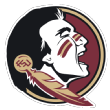
Previous rank: No. 20
Terance Mann was a star in Florida State's Sweet 16 win over Gonzaga (18 points). He's one of the young pieces FSU will bring back next season.
Leonard Hamilton's squad had only a handful of bad losses in 2017-18 and it finished 9-9 in a strong ACC. The Seminoles should improve in 2018-19, now that the NCAA has granted Phil Cofer (12.8 PPG) a sixth season of eligibility after he missed the bulk of the 2015-16 campaign due to injury.
C.J. Walker's decision to transfer hurts FSU's prospects but there is still a respectable ceiling for this team, which deserves more hype after its Elite Eight run.
19. Loyola-Chicago

Previous rank: No. 18
Loyola-Chicago received 43 votes in the final AP Top 25 poll. The Ramblers spent the bulk of the season, however, overlooked, despite a top-30 defense, a 40 percent clip from beyond the arc and a true road win over Florida. They won't fly under the radar next season.
Clayton Custer and Marques Townes, two heroes from the school's run to the Final Four, will drive next season's squad with the help of Cameron Krutwig (60.5 percent on shots inside the arc). The Ramblers lost key seniors Donte Ingram, Aundre Jackson and Ben Richardson. But the trio of returning leaders proved their worth in the NCAA tournament.
Plus, the Ramblers will rack up a bunch of victories in the Missouri Valley Conference and impress voters all year.
20. Clemson

Previous rank: No. 19
Remember when Brad Brownell was on the hot seat? That's in the past. With three of the top five scorers from last year's NCAA tournament team -- Marcquise Reed (15.8 PPG), Shelton Mitchell (12.2 PPG) and Elijah Thomas (10.7 PPG) -- set to return, the Tigers can build on last season's surprising finish.
If Clemson can play top-10 defense again, the Tigers could rise to the top tier of the ACC and spend more time in the NCAA tournament this time around.
21. LSU
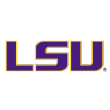
Previous rank: No. 21
Will Wade might have the surprise team of 2018-19. Yes, the Tigers finished 8-10 in the SEC and lost to Stephen F. Austin and other non-tournament teams. But Tremont Waters (15.9 PPG, 6.0 APG) is a scary talent on a young team that should improve.
Plus, Waters will have a five-star frontcourt with incoming freshmen Nazreon Reid and Emmitt Williams, the top stars of a fifth-ranked recruiting class, along with Oregon transfer Kavell Bigby-Williams. Not sure you can find a more intriguing group in the SEC.
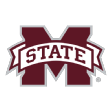
Previous rank: 22
During the NIT, Ben Howland's squad beat Nebraska, Baylor and Louisville (by 23 points) -- three legitimate bubble teams on Selection Sunday -- before losing to Penn State in the semifinals.
Aric Holman, Quinndary Weatherspoon and Lamar Peters -- three of the top four scorers from last season -- all entered the NBA draft without hiring agents. All three will return this season, joined by point guard Nick Weatherspoon (10.8 PPG).
So the best players on a 25-win team will join a top-20 recruiting class led by power forward Reggie Perry (No. 27 in ESPN 100). Sounds like Howland might have an SEC sleeper in 2018-19.
23. TCU
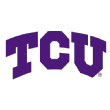
Previous rank: No. 23
You can define TCU's season as before and after Jaylen Fisher. With Fisher sidelined by a season-ending knee injury, the Horned Frogs finished 8-8 over the final 16 games of the season. They crawled into the NCAA tournament but never reached their ceiling without the 6-2 point guard.
He's back in 2018-19, along with Alex Robinson, Kouat Noi, JD Miller and Desmond Bane. Jamie Dixon will also add a top-30 class with three four-star recruits. This TCU squad could compete for the Big 12 crown.
24. Butler

Previous rank: No. 24
LaVall Jordan led his alma mater to the NCAA tournament in his first season as head coach. He'll lose Kelan Martin, but Kamar Baldwin averaged 19.0 PPG and and returns alongside Paul Jorgensen and Sean McDermott. Butler will also add Duke transfer Jordan Tucker, who will be eligible in December after the first semester.
Jordan, the second-youngest coach to lead a team to the NCAA tournament last season, should lead the Bulldogs back to the NCAA tournament with this underrated group.
25. Purdue
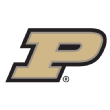
Previous rank: No. 25
The NBA isn't desperate to find more 6-1 point guards, which is why Carsen Edwards' decision to enter the draft always felt more like a learning opportunity than a career move. The sophomore who led Purdue with 18.5 PPG is back for his junior season. That's why Purdue earned top-25 consideration after losing the strongest senior class in America.
With Edwards and Matt Haarms (2.1 BPG), Matt Painter will have a strong inside-outside combo. Depth is a concern, but Dartmouth grad transfer Evan Boudreaux (17.5 PPG) will join the program after decommitting from Xavier following Chris Mack's move to Louisville.
